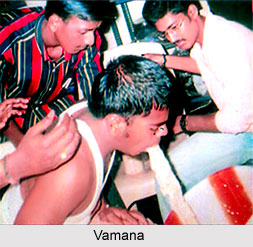 Daswidh Chikitsa refers to the ten types of treatment in Indian Ayurveda. The ten methods of treatment within the sphere of Daswidh Chikitsa include Vaman, Virechan, Niruh vasti, Nasya, Pachan, Upwas, Pipasa, Vyayam, Dhupsewan and Vayusewan.
Daswidh Chikitsa refers to the ten types of treatment in Indian Ayurveda. The ten methods of treatment within the sphere of Daswidh Chikitsa include Vaman, Virechan, Niruh vasti, Nasya, Pachan, Upwas, Pipasa, Vyayam, Dhupsewan and Vayusewan.
In Daswidh Chikitsa, Vaman means eradication of aggravated doshas through mouth by use of emetics. Virechan is the process in Daswidh Chikitsa that eradicates doshas through anal region by use of purgative.
Niruh vasti in Daswidh Chikitsa are basically helpful in strengthening and eradicating the doshas from the intestines. Pachan treatment is done to absorb the aam dosha (a kind of toxin that originates in the body).
Keeping one self-hungry is known as upwas and is one of the methods in Daswidh Chikitsa. Keeping one self-thirsty or drinking small amount of water is known as pipasa. Getting indulged in physical activities is known as vyayam or exercise. Dhupsewan is a kind of process in Daswidh Chikitsa and exposes one self to sunlight. Vayusewan involves exposing a person`s body to fresh and pure environment.
This article is a stub. You can enrich by adding more information to it. Send your Write Up to [email protected]




















